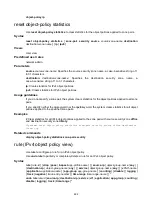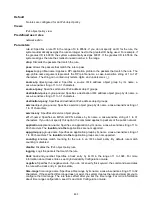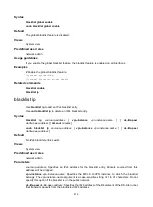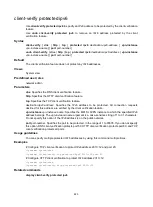
813
An attack defense policy can be applied to the device itself and to multiple interfaces.
If a device and its interfaces have attack defense policies applied, a packet destined for the device is
processed as follows:
1.
The policy applied to the receiving interface processes the packet.
2.
If the packet is not dropped by the receiving interface, the policy applied to the device
processes the packet.
Examples
# Apply the attack defense policy
atk-policy-1
to the device.
<Sysname> system-view
[Sysname] attack-defense local apply policy atk-policy-1
Related commands
attack-defense policy
display attack-defense policy
attack-defense login reauthentication-delay
Use
attack-defense login reauthentication-delay
to enable the login delay feature.
Use
undo
attack-defense login reauthentication-delay
to restore the default.
Syntax
attack-defense login reauthentication-delay
seconds
undo
attack-defense login reauthentication-delay
Default
The login delay feature is disabled. The device does not delay accepting a login request from a user
who has failed a login attempt.
Views
System view
Predefined user roles
network-admin
Parameters
seconds
: Specifies the delay period in seconds, in the range of 4 to 60.
Usage guidelines
The login delay feature delays the device to accept a login request from a user after the user fails a
login attempt. This feature can slow down login dictionary attacks.
Examples
# Enable the login delay feature and set the delay period to 5 seconds.
<Sysname> system-view
[Sysname] attack-defense login reauthentication-delay 5
attack-defense policy
Use
attack-defense policy
to create an attack defense policy and enter its view, or enter the view of
an existing attack defense policy.
Use
undo attack-defense policy
to delete an attack defense policy.
Summary of Contents for FlexNetwork MSR Series
Page 1005: ...987 ...
















































